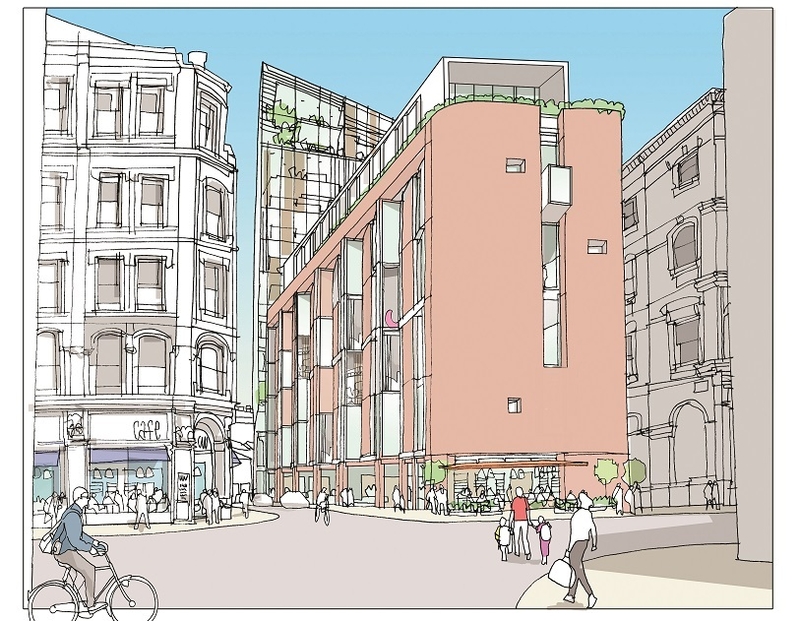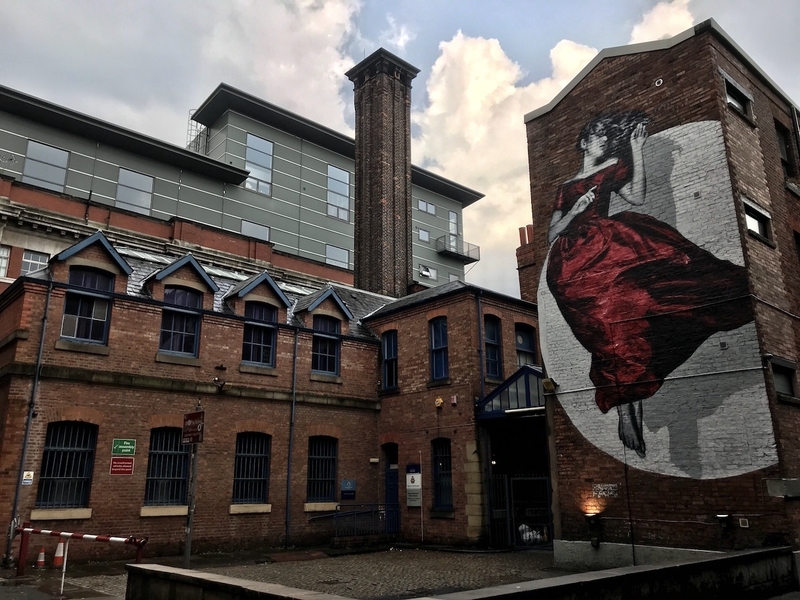Jonathan Schofield discusses authenticity and 'rank hysteria' as tensions ramp up
SO when does an area lose its ‘authenticity’?
In Manchester, at present, that debate is all about the Northern Quarter and its buildings. Older, ex-commercial buildings on Soap Street, Back Turner Street and Thomas Street have been condemned and brought crashing to the ground in quick succession.
The first demolition in mid-September, at Soap Street, was particularly unfortunate. It involved a public consultation over the future of the site led by the developer Salboy and ended with the announcement of imminent demolition. The wrecking ball followed within 48 hours. This seemed more evidence that public consultation over development was as meaningless a statutory obligation as it is for cyclists to stop at red lights.
If a building is literally falling down, it has to come down. Don’t blame the experts for that.
Dr Morag Rose, Dept of Geography and Planning University of Liverpool, who has spent twenty years exploring Manchester, says: “In principle consultation is a good thing; it should be meaningful, engaging and accessible. However, too often it is an exercise in box ticking rather than listening.”
She continues with: “The Northern Quarter has a special place in the hearts of many: its heritage and architectural character are unique. This is at serious risk of being lost, and the very reason the area is so vibrant will be destroyed. Personally, I am sad and angry at what has happened and we need decisive action to ensure this marks a turning point and a catalyst to save what remains."
The very recent demolition on Thomas Street resulted in this fetching hand-written notice and wreath placed on the Heras fencing surrounding the site.

Martin Browne, city centre resident and campaigner, thinks there should be a fresh approach from the council, especially within conservation areas such as the Northern Quarter where the built environment and its historical context is supposed to be protected.
“The objective isn't that every building should be saved, rather that developers should be constrained,” he says. Instead, he thinks more buildings could be listed or protected and that residents groups should get a say in proposing what might go on the list. Finally, if the Council wants to build inappropriately (to his mind) in places such as Thomas Street and High Street, Browne thinks they should amend the Conservation Area boundary to avoid breaching their own rules and obligations.

Jon Matthews, is an architect and founder of 5plus Architects, who found himself at the centre of the storm over the Soap Street property and the plans to develop it by Salboy. His practice is based in the Northern Quarter office and thinks the idea that the area is losing its character doesn’t ring true.
“What we get is a reluctance for some people to understand that areas change,” says Matthews. “They assume authenticity is all about their present experience of an area, rather than the fact authenticity will be different for people who’ve known the area for much longer. The result is rank hysteria about the demolition of any building, even dangerous ones and crap ones. Some of these structures are getting the same attention as the stellar Manchester buildings. They simply shouldn’t. We don’t want Manchester to become a heritage theme park. The Northern Quarter is interesting because it’s dynamic."
English Heritage have said the Thomas Street building was of no quality,
He continues: “The artists come in and they are attracted, for instance, by the context of the place and the big windows in the old buildings allowing in lots of daylight, they open a cafe bar and more people discover the area and the ‘authenticity’ and it becomes ‘interesting’, land values rise, and the developers go in following the money. It accelerates and people see new buildings plugging gaps and some of the older buildings are lost or fall down. It’s part of the story, not the end of it. It just has to be managed well.
“A problem is there is a lack of understanding about the development process. Architects don’t choose whether a site is to be demolished or developed. In these recent instances, such as on Thomas Street, English Heritage have said the building was of no quality, while if a building is literally falling down, and engineers have said so, then it has to come down. Don’t blame the experts for that.”

Janine Hague has watched the whole process. Until recently she and a group of artists and friends owned the Department Store - the distinctive pink building at the corner of Oak Street and Thomas Street. She still owns part of the site. They bought the building around two decades ago.
Hague thinks it’s about how you care for and curate the properties, ensure they have the right type of role in the Northern Quarter: “It’s a matter of attitude. We wanted creative independents in the building and we encouraged that. We’ve run with empty spaces to keep the character rather than let to inappropriate companies. We felt the area needed to keep that aura of independent and small scale creative businesses. For us this was the best way to respect the 1780s building they were housed in.”
She remains positive, “Cities change but there is still a lot that is really exciting and interesting about the Northern Quarter, the streets here still feel different, there’s a real energy.”

It was a derelict dump for years and then all the hipsters moved in. £6 beer is not authentic
Curiously, the more you talk to people the more you realise there is much common ground between differing perspectives on the Northern Quarter. Everyone agrees the street scene here is distinctive and worth preserving with its narrow, generally brick streets and their centuries old palimpsest of structures. Developers and owners will drive and pursue profit, good architects will try and make sure, as Matthews says, “the buildings bear the right relation to the street and the use it acquires’.
There can be hysteria about old buildings, built purely for function, that the original designers would be astonished to find still stand.
Yet, while social media can be hysterical about their loss, Rose, Flynn and Browne are more measured and reasonable in their concerns. It’s good for citizenship that developers are being actively challenged, it encourages a city conversation. At the same time it’s good for cities that things actually get done. Money has to be made but care has to be shown. Sometimes that is a circle that is difficult to square.
The battle, it would seem, is how to draw both sides together and to make any public consultation worth its salt. The present situation seems so perfunctory it might as well be abandoned. The debate will roll on.
Gentrification is good for some and has gone too far for others. For many it’s irrelevant. In the Unicorn pub on Church Street, a regular in his eighties, who used to work on the markets at the top of High Street, says, “Authentic? There’s been nothing authentic about this area for about forty years since the markets started closing down. It was a derelict dump for years and then all the hipsters moved in. £6 beer is not authentic.” But what about the buildings? “Lots of the new ones are crap,” he says with a shrug, “then again so are a lot of the old ones.”
















